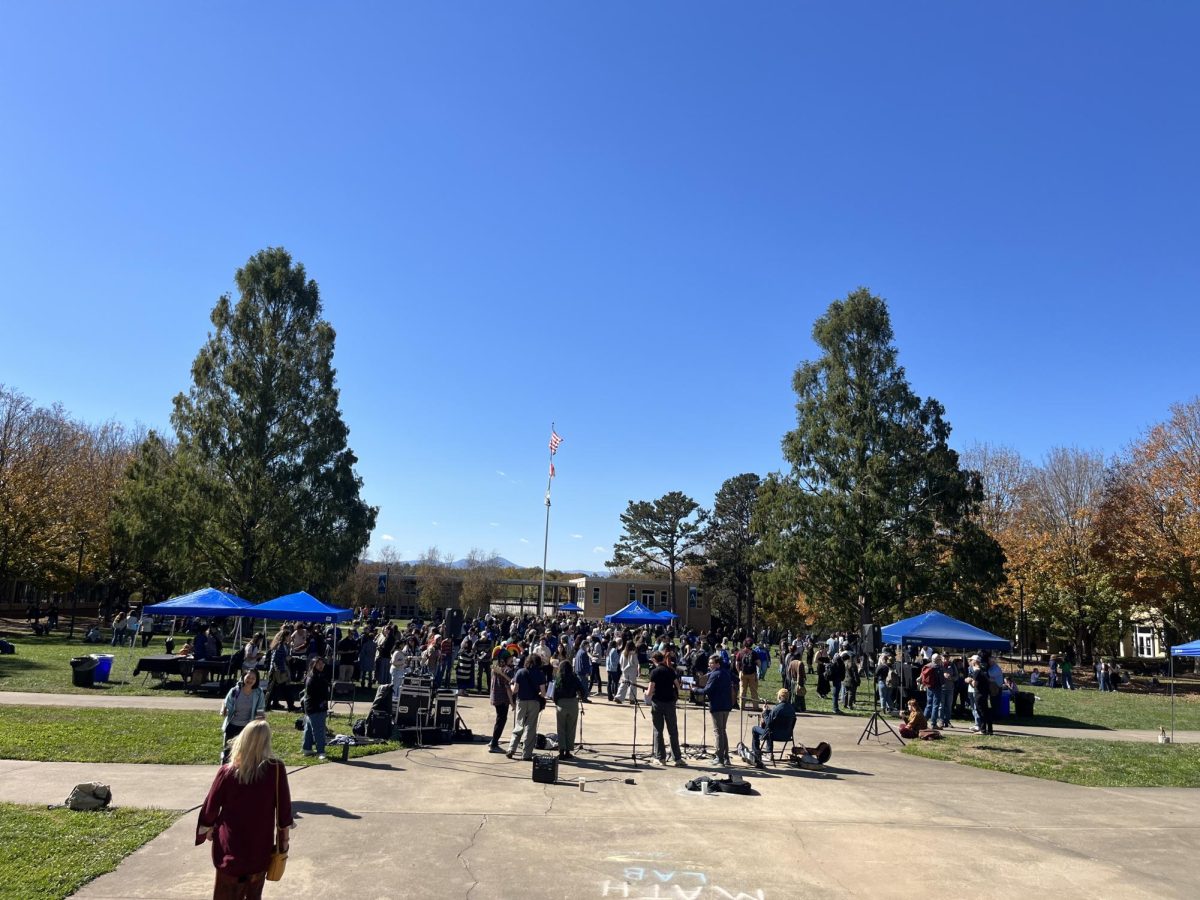Mary Thomas
Advertising Staff
[email protected]
Guest lecturer Alysia Fischer spoke to faculty and students on Thursday about what it means to be an anthropological artist and the dangers of cultural appropriation.
“As an anthropologist, I observe and participate in culture. As an artist, I comment on culture. I started to look beyond myself as an artist and wonder what are the things that I can use, that are available to me,” Fischer said.
Fischer, a lecturer at the Center for American and World Cultures at Miami University of Ohio, explained how she likes to use the role of consumption in her practice. She uses used tires, knife handles, beer pong tables and soda cans as her materials to create the works of art.
“I once found a baby doll in a dumpster and I created an armor for the ‘dumpster baby’ out of soda cans. It’s the life cycle of durable elements. I’m basically hiding trash inside of artwork,” said Fischer.
Fischer said that while it is environmentally friendly to reuse items and manufacture them into different things, it could still create problems.
“If there is no market for the items, then the reused items are just feeding the beast,” said Fischer. “You have to think, how am I going to sell this?”
Along with considering environmental issues, the fine line between cultural appropriation and appreciation is something Fischer watches very closely in her own work.
“I know enough culturally to not use bits of other cultures in my artwork. I can take what I learned and put it into my work in a way that is culturally appropriate for me,” said Fischer. “Native Americans should be able to use their own culture to survive in the economy, not Urban Outfitters.”
Emma Schaefer, a sophomore anthropology student, said she found the distinction between appreciation and appropriation very eye opening.
“Her distinction between cultural appropriations versus appreciation was my favorite aspect of the lecture. I never realized that you could actually make art that resembles another culture and not profit out of it and that is still appreciating it,” said Schaefer. “I originally thought that anything you made that resembled someone else’s culture was cultural appropriation.”
Schaefer said she was inspired by Fischer’s creative use of materials in her effort to recycle.
“I find the soymilk tabs all the time and I always wanted to do something with them, but I never knew what. Maybe next time I’ll try to make buttons out of them or something,” said Schaefer.
Evan Lewis, a senior at Warren Wilson College, said he enjoyed Fischer’s closing comments on cultural appropriation and her focus on craft.
“Especially in my craft it’s very important to be knowledgeable so you’re not ripping other people’s work off. I appreciate the comments on art and craft and how they intersect. There shouldn’t be a gap between the two,” said Lewis.
While Fischer did advocate for sustainability efforts to be incorporated in art, she recognized art does not solve everything.
“Art is not the solution, it’s more of a commentary. It should shift people’s attitudes, but it is not a solution to the problems,” said Fischer.
Categories:
Recycled materials create sustainable art with a message
September 29, 2016
0
Tags:
More to Discover


















